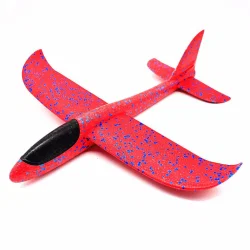Types of Toys
2023-11-27
Toys come in a wide variety of types, catering to different age groups, interests, and developmental stages. Here's a list of common types of toys:
1. Plush Toys/Stuffed Animals: Soft, cuddly toys often shaped like animals or characters.
2. Dolls: Figures resembling humans or characters, often with movable limbs and accessories.
3. Action Figures: Poseable figures representing characters from movies, TV shows, or original concepts.
4. Building Blocks: Toys that can be stacked or interlocked to create structures, encouraging spatial awareness and creativity.
5. Puzzles: Games that require assembling pieces to form a complete picture or solve a problem.
6. Board Games: Games played on a flat surface with pieces or cards, often involving strategy, chance, or both.
7. Educational Toys: Toys designed to stimulate learning and development, including alphabet blocks, math games, and science kits.
8. Electronic Toys: Battery-operated toys with lights, sounds, and interactive features.
9. Art and Craft Supplies: Materials for creative activities, such as coloring, drawing, painting, and sculpting.
10. Sports Equipment: Items for physical activity, such as balls, bats, and skipping ropes.
11. Musical Instruments: Toys that allow children to explore music, such as toy pianos, drums, and xylophones.
12. Vehicles and Remote-Controlled Toys: Cars, trucks, trains, and other vehicles, including those operated by remote control.
13. Outdoor Toys: Items for outdoor play, such as swings, slides, trampolines, and sports equipment.
14. Role-Playing Toys: Costumes, play kitchens, and other items that encourage imaginative, pretend play.
15. Collectibles: Small items often sold as a set or series, appealing to collectors of various ages.
16. Tech Toys: Gadgets and toys incorporating technology, such as tablets designed for kids, robotic toys, and augmented reality games.
17. Construction Toys: Sets that allow children to build structures or machines, fostering creativity and problem-solving skills.
18. Dexterity and Coordination Toys: Items that help develop fine and gross motor skills, such as building sets or toys with buttons and levers.
19. Soft Play Toys: Soft, cushioned toys designed for infants and toddlers to explore safely.
20. Montessori Toys: Based on the principles of the Montessori educational approach, these toys focus on self-directed play and learning.
Remember, the suitability of a toy often depends on the age, interests, and developmental stage of the child. Always consider safety standards when choosing toys for children.



